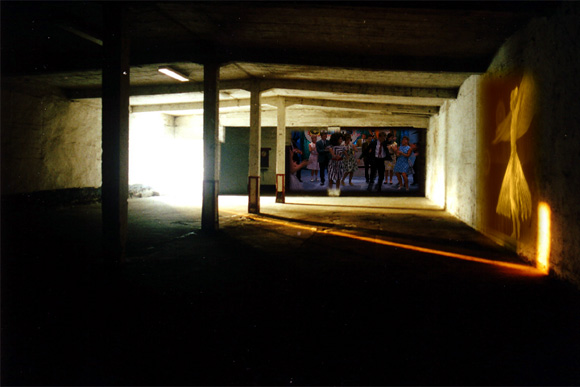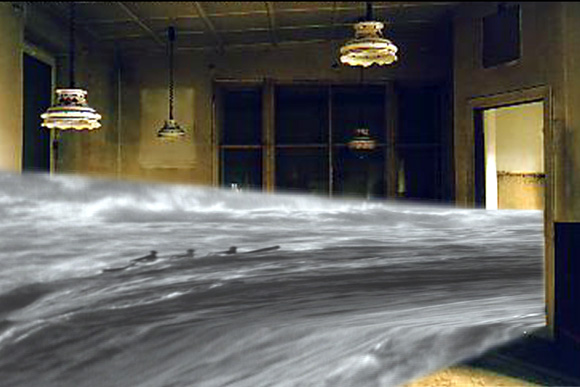A short video by Renate Aller and Beverly Peterson
about ‘Transition, Change and the Question of Alterity’
‘Heimat is an intoxicant, a medium of transport; to contemplate Heimat means to imagine an uncontaminated space, a realm of innocence and immediacy.’
Time and space in this work are not dimensions that one can trace in a linear manner; rather they are paths interrupted by unexpected and novel relationships between the various images.
The dilation of each frame accentuates and establishes the nature of the image as a metaphor for the process of memory and forgetting.
The passage between one stage and another is a point where memory can exist, because time is not the story but a state (condition). Time and memory are fused together.
Renate Aller and Beverly Peterson started their collaborations with an invitation into the Museum of Labor, the Emigration Halls, Hamburg, and Eberwalde Film Festival Germany with their piece ‘Whose place is this anyway’.
The project was initiated by an artist group from Hamburg with an art event as a reaction due to the planned destruction of the last remaining emigration halls in Hamburg Veddel, an initiative including visual artists and performance artists. New York residing artist Renate Aller was invited for a contribution from the New York perspective. She decided to collaborate with filmmaker Beverly Peterson to create an 8 minute long, looping video for viewing on a monitor including popular archival materials and photos / sound and film/ photo material by Aller and Peterson. The project reflects the dreams and expectations of the emigrants to the USA of that time.
Aller and Petersons piece also considers the expectations and ideals of the current residents Veddels who are mainly immigrants from Turkey and other countries.
The belief ( hope) in the technical, what we call progress, is supposed to promise us a better life. Many of the emigrating Europeans between 1900-1930 left to live in the US due to the developments of the industrial revolution.
The issues of ‘otherness’, cultural as well as legal rights in a country – invasions and divisions of power are an ever uprising issues in our multi cultural world.
Representation of modern history are closely linked to photography/film. Through photography/film we have a representation, a retelling of history and its events, that create our present day historical consciousness.
Due to the publicity the art project received, the emigration halls have been restored and have been turned into a Museum for Emigration/Immigration.
Narration / Sound layer in the video
A Klee painting named ‘Angelus Novus’ shows an angel looking as though
he is about to ( sound layer: social interactions/standards/expectations) move away from something he is fixedly contemplating.
His eyes are starring, his mouth is open, his wings are spread.
This is how one pictures the angel of history.
His face is turned away toward the past. Where we perceive a chain of
events, he sees one single catastrophe which keeps piling wreckage upon wreckage and hurls it in front of his feet.
The angel would like to stay, awaken the dead, and make whole what has
been smashed.
But a storm is blowing from paradise: is has got caught in his wings with
such violence that the angel can no longer close them.
This storm irresistibly propels him into the future to which his back is
turned, while the pile of debris before him grows skyward.
This storm is what we call progress. English translation of German narration (Walter Benjamin)
Der folgende Text ist einer der Lesungen die den Kurzfilm begleiten. Walter Benjamin, Illuminationen, Seite 255:
„ Es gibt ein Bild von Klee, das Angelus Novus heisst. Ein Engel ist darauf dargestellt, der aussieht, als waere er im Begriff, sich von etwas zu entfernen, worauf er starrt. Seine Augen sind aufgerissen, sein Mund steht offen und seine Fluegel sind ausgespannt. Der Engel der Geschichte mus so aussehen. Er hat das Antlitz der Vergangenheit zugewendet. Wo eine Kette von Begebenheiten vor uns erscheint, da sieht er eine einzige Katastrophe, die unablaessig Truemmer auf Truemmer haeuft und sie ihm vor die Fuesse schleudert. Er moechte wohl verweilen, die Toten wecken und das zerschlagene zusammenfuegen. Aber ein Sturm weht vom Paradies her, der sich in seinen Fluegeln verfangen hat und so stark ist, dass der Engel
sie nicht mehr schliessen kann. Dieser Sturm treibt ihn unaufhaltsam in die Zukunft, der er den Ruecken kehrt,waehrend der Truemmerhaufen vor ihm zum Himmel waechst. Das, was wir den Fortschritt nennen, ist dieser Sturm.“
The Language in which we are speaking is his before mine.
His language so familiar and so foreign will always be for me an acquired speech.
I have not made or accepted it’s speech.
My voice holds there at bay, my soul frets in the shadows of his language. (James Joyce)
Sozilastrukturen – social interactions
Masstaebe – standards
Erwartungen – expectations
Zugehoerigkeit – belonging
Anstandsregel – convention
Schichtung – stratification
Formung – transformation
Immigration Halls, Hamburg, Veddel, 2003
Museum for Labor, Hamburg,2003
Eberswalde Filmfest, Germany, 2004
Beverly Peterson, documentary film maker : http://bpfilms.net/
Renate Aller, multi media artist: www.renatealler.com

